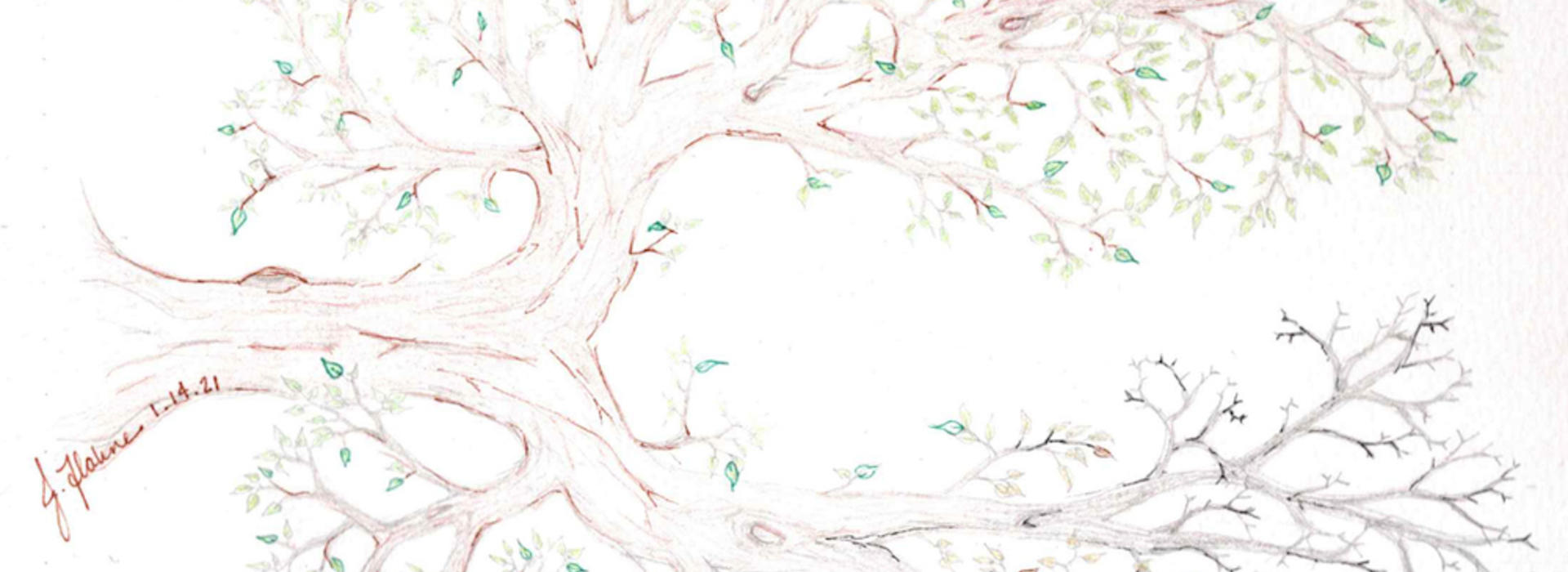
“Becoming a Doctor:” Student Anthology Spurs Reflection
What does it mean to become a physician?
“As medical students, we move through different hospitals for months, weeks, sometimes only days at a time. We see firsthand how the body both becomes and comes undone, and this is how we learn. We accompany our patients through cross-sections of illness but rarely stay for the entire chapter,” wrote Marvin So, a third-year medical student, in the anthology “Becoming a Doctor at the University of Minnesota.”
For Marvin, saying goodbye to a memorable patient and experiencing the frustration of leaving the care team due to his rotation ending, solidified the importance of attention and care in medicine.
“As the heavy hospital door latched closed, I felt its weight touch down on my chest,” he wrote. “The sight of your face in that moment, slats of hazy sunlight at your feet, I’ll never forget.”
Narrative medicine, the act of writing stories that explore the experiences of both healthcare professionals and their patients, has been established as a powerful learning tool linked to modification of attitude, knowledge and skills. The U of M Medical School’s “Becoming a Doctor” course aims to help students process these collective experiences over the course of their medical training. The class is required for third- and fourth-year medical students and is a way of bringing them back together after their clinical rotations to focus on other aspects of medicine. The course’s curriculum is organized around four main concepts: reflective practice, professional identity formation, advanced clinical and communication skills and community engagement.
“Their final assignment is a reflective writing piece, and so we’ve gathered tons of stories,” said co-course director, Johannah Scheurer, MD, an assistant professor in the Department of Pediatrics and one of the anthology’s editorial advisors. “The anthology has been, I would say, a little bit of a pipe dream for a couple of years. But this year, the editor-in-chief, Elizabeth Kim, said, ‘I want to make this happen.’”
Dr. Kim, then a fourth-year medical student, spearheaded the project alongside a student editorial board and a group of faculty advisors. As a biology and Spanish double major during undergrad, she has always enjoyed the intersection of language, learning and speech development and how that allows people to hear and tell stories, shaping their identities.
“I really enjoyed the opportunities ‘Becoming a Doctor’ provided and having time and space – intentional diastoles – to sit down and reflect on important memories that impacted our medical education,” Dr. Kim said.
Spurred by the course’s founding director, Andrew Olson, MD, an associate professor in the Departments of Medicine and Pediatrics, Dr. Kim began soliciting stories from her classmates and partnered with University of Minnesota Libraries to develop the book.
“I knew that my classmates have really important stories to share; they’re amazing,” Dr. Kim said. “I’m so grateful for our class.”
Dr. Kim and her classmates’ education had been interrupted by the COVID-19 pandemic, which helped inspire the anthology’s format.
“We worked together to come up with this core theme around the respiratory cycle,” Dr. Kim said.
That theme shaped the anthology’s formatting arc: inspiration, pause, exhalation.
“‘Inhale’ is getting ready to do clinical rotations early in medical school, and then ‘pause’ is when COVID-19 hit and we experienced community outrage surrounding racial injustice,” Dr. Scheurer said. “‘Exhale’ is when they went back to clinical rotations, which had been interrupted due to the pandemic. I think especially this past year, it really tells the story of what it’s been like in this journey of becoming a physician during COVID-19 and awakening to racial injustice.”
With over 45 authors featured, students found they’d been facing similar issues.
“I think we were all encouraged hearing our classmates’ stories and finding ways that although our experiences were maybe a little different, we shared a lot of similar firsts, joys and challenges,” Dr. Kim said. “I think it can sometimes be therapeutic to know that you’re not alone.”
The U of M Medical School’s Center for the Art of Medicine (CFAM) has used storytelling as a way to further its goal of deepening empathy, encouraging curiosity, promoting creative thinking and embodying joy. The Storytelling in Medicine Program includes podcasts, story slams and teachings in reflective writing techniques. One of CFAM’s associate directors, Maren Olson, MD, MPH, MEd, assistant professor in the Department of Pediatrics, recently published a paper in Medical Education Online, whichfound that Story Slam participants reported themes of connection with community, reconnection with meaning and purpose in work and renewal of hope and gratitude.
“I found it incredibly therapeutic putting an idea that I’d been grappling with on paper, and trying to organize it in a way that makes sense not only to me but also to a reader,” Marvin said.
Marvin’s piece, “A Farewell With Tomatoes,” traces parallels between the complexity of patient-provider relationships and the practice of gardening.
“As physicians, perhaps there is a lesson we can draw from the master gardener — he who tends to his crop with faith and devotion, season after season. He cannot predict tomorrow’s blight, not the infestation next year, yet he shows up all the same. For what is a harvest, if not a celebration of presence,” Marvin wrote. “So, too, can we offer our attention, care and noticing, despite knowing what lies ahead. For our loved ones, our patients, and yes, even a miraculous, lumpy tomato.”